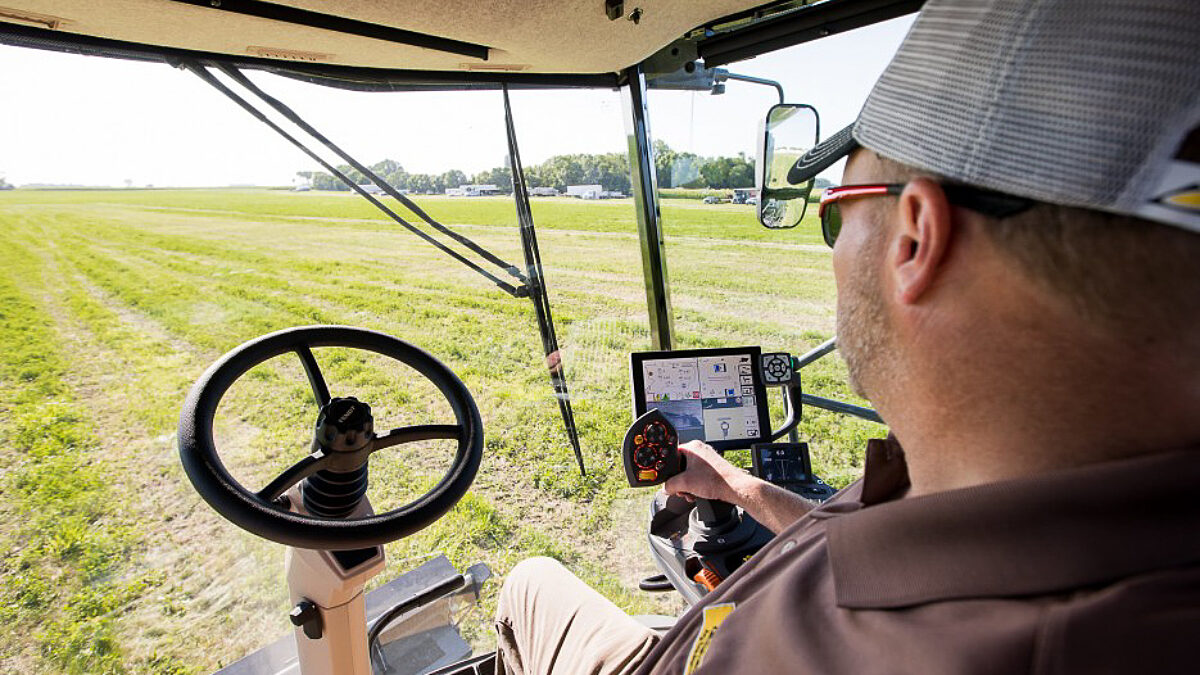How Satellites, Drones and the Internet are Changing Agriculture
TOPICS
TechnologyGuest Author
Special Contributor to FB.org

photo credit: AFBF Photo, Philip Gerlach
By Cole Staudt @ColeStaudt64
As my dad climbs into the tractor this spring, he’ll plug in his iPad, open an app and start planting. As the tractor rolls across the field, the screen on the iPad turns green with it.
The app is logging seed population data, cross-referencing the soil type with surveys of the land.
Technology can also decrease the time farmers spend on a task, allowing them to focus on other duties, of which there is no shortage on the farm.
As the plants come up, satellite photos of his field are analyzed, and a color-coded map shows him any trouble spots. He’ll go out to the field and put the drone he purchased last year into the air and take a closer look at those spots and make any necessary adjustments.
In the fall, he’ll plug the iPad into the combine so it can track the yield as he harvests. When harvest is complete, he can see how different seeds performed in different soils, analyzing the impacts of fertilizer and other inputs, and make his plan for next year.
I never could’ve imagined my dad utilizing technology like this on the farm; it was hard enough to teach him to use his first smartphone. But it’s becoming standard operating procedure for farmers and ranchers across the country.
As technology has become more affordable, many farmers see it as a tool to help reduce inputs, increase yields and reduce runoff from fertilizers and other necessary chemicals. Technology can also decrease the time farmers spend on a task, allowing them to focus on other duties, of which there is no shortage on the farm.
There are many organizations supporting the development of this technology, especially from start-up companies in rural communities. One example is the American Farm Bureau’s Ag Innovation Challenge, which recently named Dana Mohr of HydroSide Systems as Entrepreneur of the Year.
HydroSide Systems developed a product that can be added to an existing wheel line which will autonomously move the line to irrigate the whole field. Automating the wheel line’s movements means farmers save time and effort usually spent manually moving the line.
Other start-ups that were featured in the Challenge monitor swine herds in real time, use drones to spray specific areas in a field and reduce biomass waste.
By integrating data into decisions, farmers can increase their profit margins, which could make all the difference in this tight farm economy. Using drones to drastically reduce the amount of weed killer a farmer must apply can save thousands of dollars and decrease the risk of run-off. Implanting microchips into an animal’s ear can help specialize its diet, monitor its health and even save its life.
And as more data is collected on farms nationwide, we can better track all the factors that impact crop and animal growth, which will help reduce waste and produce better, more nutritious products.
In November 2018, romaine lettuce was pulled from store shelves nationwide because the source of an E. coli outbreak couldn’t be found. New technology, once fully implemented, will be used in the future to track food from field to table. That means if something does go wrong, like a food-borne illness, it can be traced back to the place it started, allowing for an efficient recall targeting only the products that came in contact with the contamination.
These are just a few of the many ways farmers and ranchers are starting to implement technology. As farmers like my dad start using these new technologies, our food supply will become even safer, healthier and more sustainable.
Cole Staudt is media relations specialist at the American Farm Bureau Federation.
